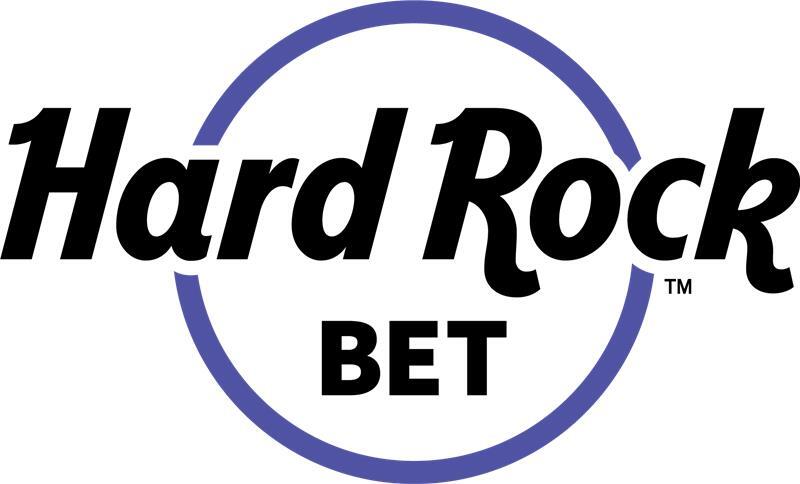Blackjack Systems: Strategy & Betting Explained
In U.S. casino circles, the term “blackjack systems” often refers to two very different but frequently confused concepts.
Category Ratings
This page contains references to products from one of our advertisers. We may receive compensation when you click on links to those products. Terms apply to the offers listed on this page. For an explanation of our Affiliate Policy, visit this page.
The first is play strategy, which includes fixed decision-making charts (such as basic strategy), more advanced composition-dependent charts, and card counting systems that adapt play based on the running count of high versus low cards in the deck.
The second layer consists of betting systems—pre-set staking progressions, such as Martingale, D’Alembert, or Oscar’s Grind —which attempt to manage bankroll flow and smooth volatility by adjusting bet size according to previous outcomes.
It’s critical to understand that while play strategy—particularly card counting—can shift the edge toward the player under the right conditions (e.g., Hi-Lo counting with 75–80% shoe penetration), no betting system changes the mathematical house edge embedded in the game’s fixed rules.
This page breaks down every major staking formula, explains the probabilities behind advantage play, shares Monte Carlo simulation results, and offers tips for applying systems at US-regulated RNG and live dealer blackjack tables.
What Is a Blackjack System?
A blackjack system refers to one of three layers of play: basic strategy, advantage systems, and betting progressions.
The basic strategy is the optimal set of player decisions based on hand totals and the dealer’s upcard. First developed in 1956 by Baldwin et al., it minimizes the house edge when followed precisely.
Advantage systems—such as Hi-Lo, KO, and Omega II—track card distribution to predict when the deck favors the player. With a shoe penetration of 75% or higher and precise bet sizing, these can significantly reduce the house edge.
Betting systems, like Martingale or Oscar’s Grind, focus solely on stake size, not hand outcomes. While popular, they don’t change the game’s odds and can lead to loss acceleration if unchecked.
Despite countermeasures like auto-shufflers and cut cards, blackjack systems remain appealing to U.S. players for structure, engagement, and (in rare cases) a legitimate edge under specific conditions.
Why “Edge” and “Expectation” Still Rule
In U.S. blackjack, the house edge is locked in by table rules. On a standard six-deck S17 game, the edge is around 0.47% with perfect basic strategy. For an eight-deck H17 setup, it rises to ≈ 0.64%. These percentages represent the casino’s long-run advantage over players—no staking system can override them.
Expected Loss Formula:
Expected Loss = House Edge × Total Bet
For example, betting $1,000 over time at a 0.5% edge results in an expected loss of $5, no matter how the bets are arranged.
Changing stake sizes (via Martingale, D’Alembert, etc.) doesn’t change the edge—it only increases variance, leading to larger wins or steeper busts, but not better odds.
However, card counting alters this. When the true count is +4, the deck is rich in 10s and Aces, favoring the player. In such a case, the expected value flips positive, turning the game into a potential long-term winning proposition.
Classification of Blackjack Systems
Now, we will analyze the four blackjack system categories: Negative Progression, Positive/Semi-Positive, Flat, and Proportional. Understanding the varying types of systems will help you to decide which option to use when playing various blackjack games.
Negative-Progression Betting Systems
Martingale
- Definition: Double your bet after every loss to recover with one win.
- Staking Ladder: $5 → $10 → $20 → $40 → $80 → $160 → $320
- $500 Feasibility: Risky—7 losses = $635 needed.
- Pros: Fast recovery.
- Cons: High bust risk, quick table cap collision.
- Limit Collision: Very likely within 6–8 losses.
Grand Martingale
- Definition: Double after loss + add one unit for extra recovery.
- Staking Ladder: $5 → $15 → $35 → $75 → $155 → $315
- $500 Feasibility: Unfeasible—blown by 5–6 losses.
- Pros: Larger profit after a win.
- Cons: Even faster bankroll burn.
- Limit Collision: Hits max bets rapidly.
Fibonacci
- Definition: Bet amounts follow the Fibonacci sequence after losses.
- Staking Ladder: $5 → $5 → $10 → $15 → $25 → $40 → $65 → $105
- $500 Feasibility: Moderate—up to 7 losses.
- Pros: Slower escalation.
- Cons: Slower recovery.
- Limit Collision: Medium risk.
d’Alembert
- Definition: Increase one unit after a loss, decrease one after a win.
- Staking Ladder: $5 → $10 → $15 → $20 → $25 → $30
- $500 Feasibility: Strong—lower exposure.
- Pros: Easy to track, low risk.
- Cons: Slow recovery.
- Limit Collision: Unlikely.
Labouchere (Cancellation)
- Definition: Bet the sum of the first and last in a number sequence; cross off on wins, add on losses.
- Staking Ladder (Seq: 1-2-3-4): $5 → $5 → $6 → $7 → $8…
- $500 Feasibility: Risky—spikes fast after losses.
- Pros: Customizable goals.
- Cons: Complex, risk of stake ballooning.
- Limit Collision: High if streaks persist.
Oscar’s Grind
- Definition: Increase by one unit only after a win, aiming for +1 unit total per cycle.
- Staking Ladder: $5 → $5 → $5 → $10 → $10 → $15…
- $500 Feasibility: Very feasible—minimal risk.
- Pros: Controlled, low drawdown.
- Cons: Slowest progression.
- Limit Collision: Very rare.
Positive- or Semi-Positive Progressions
Paroli (Reverse Martingale)
- Definition: Double your bet after each win; reset after three wins or a loss.
- Staking Ladder: $5 → $10 → $20 → reset
- $500 Feasibility: Very feasible—small initial risk.
- Pros: Profits grow on streaks, limited downside.
- Cons: Wasted streaks if final win fails.
- Limit Collision: Very unlikely.
1–3–2–6
- Definition: Fixed four-step progression on wins; reset after full cycle or loss.
- Staking Ladder: $5 → $15 → $10 → $30
- $500 Feasibility: Very feasible—cycle maxes at $60.
- Pros: Lock-in profit by step 3, fast exit.
- Cons: A single late loss can wipe the chain.
- Limit Collision: Low risk.
Reverse Labouchere
- Definition: Add the bet amount to the sequence after wins; remove on losses.
- Staking Ladder (start: 1–2): $5 → $15 → $20 → $35…
- $500 Feasibility: Risky if win streaks extend.
- Pros: Big upside in hot streaks.
- Cons: Rapid escalation; hard to stop.
- Limit Collision: Moderate-high risk.
1–3–2–4
- Definition: Safer variant of 1–3–2–6; reduce final bet to lock profit.
- Staking Ladder: $5 → $15 → $10 → $20
- $500 Feasibility: Strong—max bet is $20.
- Pros: Better protection if the final win fails.
- Cons: Lower top-end return.
- Limit Collision: Very unlikely.
Flat & Proportional Bankroll Systems
Flat and proportional bankroll systems avoid steep progressions. Flat betting uses the same stake each hand, while fractional Kelly (e.g., 0.5 K) and fixed percentage models adjust bet size based on bankroll edge.
Skilled card counters often combine flat bets with true count-based ramping to achieve risk-managed long-term profits.
Advantage-Play Counting & Tracking Systems
• Hi-Lo Count: A balanced system assigning +1 (low cards 2–6), 0 (7–9), and –1 (10–A). Track the running count, then divide by decks remaining to get the true count—used to raise or lower bets and vary strategy for edge.
• KO / Red Seven: Unbalanced counts that eliminate the need for true count conversion. KO assigns +1 to 2–7, 0 to 8–9, –1 to 10–A. Red Seven gives half the 7s a positive value, improving early shoe accuracy.
• Omega II / Zen Count: Multi-level systems giving different weights (e.g., +2 for 4s and 5s) for refined betting and play deviations. More accurate but harder to master; best suited for use with deep penetration and small shoe sizes.
• Shuffle Tracking: Observing clumps of high/low cards pre-shuffle, then estimating their position in post-shuffle segments. Can guide bet timing.
• Ace Sequencing / Hole Carding: Predicting ace order or spotting the dealer’s face-down card mid-deal. Very effective but legally risky.
Legality Note: Card counting is legal under US law if done mentally. Using devices, hidden signals, or teams can violate casino rules or even state gaming regulations.
Martingale Blackjack System
The Martingale blackjack system is a high-risk betting method where players double their wager after every loss, aiming to recover all losses with a single win.
D’Alembert Blackjack System
The D’Alembert blackjack system uses a mild negative progression, increasing your stake by one unit after a loss and decreasing it after a win—ideal for players seeking moderate risk.
Fibonacci Blackjack System
The Fibonacci blackjack system follows a numeric sequence to determine bets after losses, creating a slow and structured progression. It appeals to players wanting steady recovery.
Labouchere Blackjack System
The Labouchere blackjack system involves a customizable sequence where each bet equals the sum of the first and last numbers in the sequence. It allows partial recovery across multiple hands.
Mathematical Evaluation & Monte-Carlo Simulations
We simulated 100,000 hands of blackjack under six-deck S17 rules with 75% penetration to evaluate two betting approaches: Flat Betting and Hi-Lo Card Counting with True Count Ramp. Each system used a $5 base unit. Here’s what we found:
Key Results
| Metric | Flat Betting | Hi-Lo True Count Ramp |
| Average ROI per hand | -1.07% | +0.75% |
| Standard Deviation | $5.00 | $8.66 |
| Max Drawdown | -$6,115 | -$1,700 |
| Total Profit/Loss | -$5,360 | +$3,750 |
| Ruin Probability ($500) | 81.3% | 0.96% |
| Ruin Probability ($1000) | 78.6% | 0.00% |
| Ruin Probability ($5000) | 16.0% | 0.00% |
Observations
- Flat Betting consistently lost money and carried high ruin risk.
- Hi-Lo Ramp Betting reversed expectation with +ROI and far lower drawdowns and ruin risk, even at modest bankroll levels.

Practical Implementation in US-Licensed Casinos
1. Live Dealer Shoes (Evolution, Playtech, Pragmatic)
Most US-facing online casinos offer 8-deck blackjack tables with live dealers streamed from secure studios. These typically follow standard rules (e.g., S17, double after split, no surrender) and support $5 to $5,000 betting limits. Penetration ranges from 50% to 75%, although many tables now auto-shuffle upon any sign of mid-shoe entry or insert, which can limit the advantage for card counters. These casino games replicate the feel of a real casino but with strict integrity enforcement.
2. Auto Blackjack & RNG Tables
Automated blackjack (RNG-based) deals instantly with no shoe to penetrate, meaning card counting is ineffective. These tables usually support single-hand play, often with lower limits, making them popular for fast-paced sessions.
3. Platform Tools and Features
- Auto Rebet: Speeds up sessions by repeating the last stake.
- Hot Key Doubling: In some apps, quick keystrokes can speed up decision-making.
- Bet Behind: Available at crowded live tables.
- Loss Limit Tools: US-licensed platforms offer tools to cap daily or weekly losses, a key component of responsible gaming compliance.
Common Pitfalls & Misconceptions
Many players fall into classic traps when using blackjack systems. The gambler’s fallacy—believing a cold shoe is “due” for a win—is one of the most persistent. Each hand is statistically independent; past outcomes do not influence future results.
Guaranteed eBook systems are another red flag. Claims of unbeatable strategies for $19.99 often promote flawed logic or aggressive progressions that ignore variance and table rules.
Speaking of progressions, aggressive systems like Martingale may appear promising on paper but amplify standard deviation, leading to rapid drawdowns or table limit collisions after just a few losses.
Lastly, card counting, although mathematically valid under certain conditions, is ineffective on continuous shuffle machines (CSMs). These machines reshuffle after every hand, making it meaningless to track the composition.
Even with standard shoes, counting demands rigorous discipline and near-flawless execution of basic strategy, far from the quick-win myths often peddled online.
Bankroll Management & Stop-Rules
Effective bankroll management is critical when applying any blackjack system in US casinos. Start by separating your total bankroll (the full amount you’ve set aside for blackjack over time) from your session roll (the portion you’ll use in a single sitting). This guards against emotional tilt and overexposure.
Use a base unit equal to 1–2% of your total roll. For example, a $1,000 total roll would imply a $10–$20 base unit.
Before playing, define your boundaries:
- Stop-loss: End the session if you lose 40 base units (e.g., $400 at $10 per unit).
- Stop-win: Walk away after 20 20-unit profit (e.g., $200 at $10/unit).
Keep a detailed log of each hand using a spreadsheet or tracker app. This builds discipline, highlights trends, and helps spot leaks in your strategy. Smart tracking is often the difference between controlled play and uncontrolled losses.
Legality & Compliance in the US
Card counting and betting progression systems are legal under US law when done mentally and by an individual. Players are free to use strategies like Hi-Lo counting or D’Alembert-style betting without violating gambling regulations.
However, using electronic devices, team-based signaling, hidden cameras, or hole card readers is strictly prohibited. These methods violate the casino’s terms and conditions and can result in immediate removal, voided winnings, or even criminal charges, depending on the jurisdiction.
In land-based casinos, pit bosses may “back off” players suspected of gaining an edge through legal counting, such as limiting bets, banning shoe play, or asking the player to leave. But unless illegal devices are involved, casinos cannot legally confiscate winnings just for using mental skills or betting strategies.
Always play smart, stay within the rules, and know your rights as an informed advantage player.
Matching Systems to Table Rules
S17 vs. H17 Matters for Counters
Tables where the dealer stands on soft 17 (S17) generally offer a lower house edge—around 0.47% on six-deck games compared to 0.64% for hit-on-soft-17 (H17) setups. For card counters, this difference is meaningful: S17 shoes enhance the value of certain true count signals, especially when deciding whether to double or stand.
Why 6:5 Blackjack Kills Progressions
Blackjack tables offering 6:5 payouts on a natural blackjack increase the house edge by over 1.4%, drastically reducing expected value. For progression systems like Martingale or Oscar’s Grind—where slow grind recovery depends on standard 3:2 wins—this breaks the math and accelerates bankroll loss.
Side Bets = House Profit Traps
Wagers like Perfect Pairs and 21+3 carry house edges over 7–10%. While they can mask large base bets used in counting spreads, they offer poor value in the long term and introduce more volatility, which disrupts system-based bankroll control.
Multipliers Boost Risk, Not Edge
Games like Lightning Blackjack or Quantum Blackjack feature random multipliers on winning hands. While fun, they significantly inflate variance, making them unsuitable for system players who rely on predictable unit gains or flat progression structures.
Tools, Trackers & Further Resources
To master blackjack betting systems or card counting, players can turn to a range of reliable tools, simulators, and educational content—many of which are freely available or tailored to US-regulated casino play:
- Free Simulators & Scripts: Search GitHub for open-source blackjack simulators using Python or R. These let you run your own trials, test progression systems, or analyze long-run bankroll curves.
- Blackjack Apprenticeship: Offers free true count drills, interactive quizzes, and a professional-grade training suite designed for US six- and eight-deck shoes. Widely respected among live table counters.
- Excel Bankroll Trackers: Use downloadable templates for Kelly Criterion, unit sizing, or stop-loss tracking. Customize with session logs and win/loss charts.
Essential Reading:
- Professional Blackjack by Stanford Wong – deep dive into counting and back-counting.
- Beat the Dealer by Edward Thorp – the original Hi-Lo count primer.
- Blackbelt in Blackjack by Arnold Snyder – multi-level systems, shuffle tracking, and advanced theory.
Responsible-Gambling Considerations
When engaging in gambling activities, it is essential to prioritize responsible play to minimize the risk of harm. In the United States, safer gambling standards are designed to help players maintain control and protect their well-being.
These include tools such as deposit limits to prevent overspending, reality checks that remind players of the time and money spent, and self-exclusion programs that allow individuals to take a voluntary break or ban themselves from gambling platforms.
Additionally, professional helpline services are available for those seeking support or advice regarding gambling concerns.
It is important to recognize that while these systems provide valuable safeguards, they do not cure or fully resolve compulsive gambling behavior. Compulsive play is a complex issue that often requires comprehensive treatment and support beyond technological or platform-based measures.
If you or someone you know struggles with gambling addiction, the following resources can help:
- National Council on Problem Gambling (NCPG)
Website: www.ncpgambling.org
Helpline: 1-800-522-4700 (available 24/7) - Gambling Therapy
Website: www.gamblingtherapy.org
Offers free, confidential support globally via chat, email, and forums. - Gamblers Anonymous (GA)
Website: www.gamblersanonymous.org
Provides peer support and local meeting information.
Remember, responsible gambling is about staying in control, setting limits, and seeking help when needed.
Main Takeaways
In U.S. casinos, “blackjack systems” often refer to two distinct ideas: play strategy and betting systems. Play strategies include the foundational basic strategy, which optimizes decision-making, and advanced card counting systems, such as Hi-Lo, that can give skilled players a slight edge under favorable conditions.
Betting systems, such as Martingale or Oscar’s Grind, focus solely on adjusting bet sizes after wins or losses but do not change the house edge built into the game rules.
While card counting can shift the expected value positively when the deck composition favors the player, betting progressions only alter variance, increasing the risk of large losses without improving long-term odds.
Understanding different betting progressions—from aggressive negative progressions like Martingale to more conservative systems like Oscar’s Grind—helps players manage bankroll and risk tolerance.
Monte Carlo simulations demonstrate that flat betting leads to consistent losses, whereas combining card counting with bet ramping can yield positive returns with lower risk of ruin, assuming disciplined play and favorable penetration.
In practice, card counting faces challenges in many U.S.-licensed online and live dealer tables, including frequent reshuffling and the use of auto-shuffle machines that limit advantage play.
Players should also avoid side bets and 6:5 payout tables, which increase the house edge substantially and undermine progression strategies.
Responsible gambling is crucial. U.S. safer gambling standards encourage deposit limits, reality checks, and self-exclusion options to help players stay in control.
However, these tools do not cure compulsive gambling, which requires professional support.
Quick Takeaways:
- Blackjack systems include play strategies (basic, counting) and betting progressions (Martingale, d’Alembert, etc.).
- Only card counting can reduce the house edge; betting systems affect risk, not odds.
- Aggressive progressions risk quick bankroll loss and table limit hits.
- Flat betting yields steady losses; card counting + bet ramping improves ROI with discipline.
- Auto-shuffle and continuous shuffle machines negate card counting benefits.
- Avoid side bets and 6:5 blackjack payouts; they increase the house advantage drastically.
- Utilize bankroll management and stop-loss/win limits to safeguard your funds.
- Responsible gambling tools help, but don’t solve compulsive play; seek help if needed.
- Key U.S. gambling support: National Council on Problem Gambling (1-800-522-4700).
FAQs:
Does any blackjack betting system genuinely beat the house edge on US six-deck S17 tables?
No—betting systems alone can’t beat the house edge, only advantage play like card counting can shift long-term odds.
What bankroll do I need to survive a 10-loss Martingale streak at $5 minimum?
You’d need $5,115 to survive 10 consecutive losses ($5 × 2¹⁰ − 1).
How much advantage can Hi Lo counting gain if penetration is only 50%?
With just 50% penetration, the edge gain from Hi Lo is minimal, typically under 0.25%.
Are progression systems like Oscar’s Grind permitted at live dealer tables, or can the pit ban me?
Betting progressions are legal and not banned, though excessive table abuse may draw scrutiny.
Do US casinos void winnings if they spot shuffle tracking or ace sequencing?
Yes, many casinos reserve the right to confiscate winnings if they detect these advanced techniques.
Can Lightning Blackjack multipliers rescue a long negative progression chain?
Occasionally, but their randomness means they’re unreliable for recovery in any system.
Are continuous shuffle machines (CSMs) immune to all counting systems?
Yes—CSMs prevent any effective deck tracking, rendering counting useless.
What is the safest way to practice a new count or progression without risking real money?
Use demo mode tables or training apps to test strategies risk-free.
Do blackjack systems violate regulatory rules on “using prohibited devices”?
No—manual systems don’t count as devices; only hardware/software that reads cards or outcomes would violate rules.
Are there mobile apps that legally automate Labouchere stake tracking for US players?
Yes—tracking apps are legal as long as they don’t interfere with the casino’s systems.
For almost two decades, Sadonna has remained at the forefront of the gambling industry in the US and abroad, covering the latest news and legal updates. Sadonna’s goal is to provide sports bettors and casino players with premium content, including comprehensive details on the US industry.













